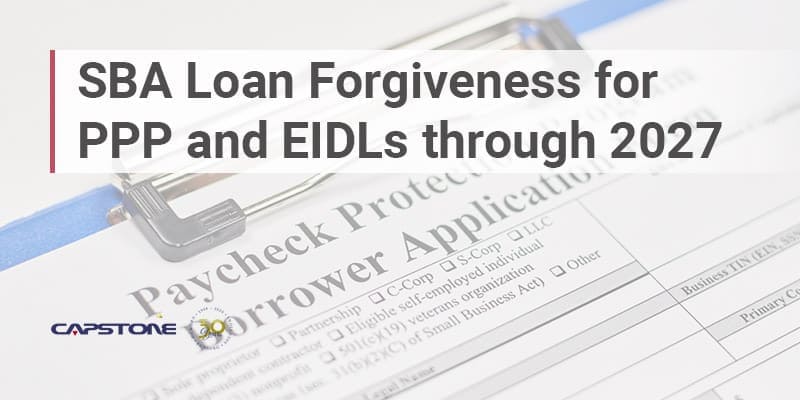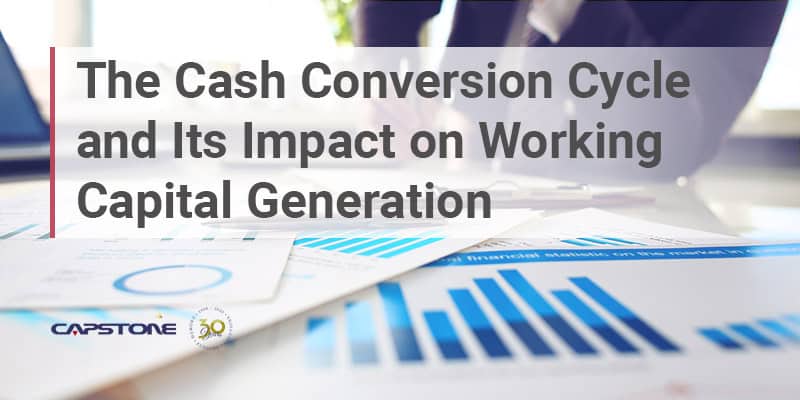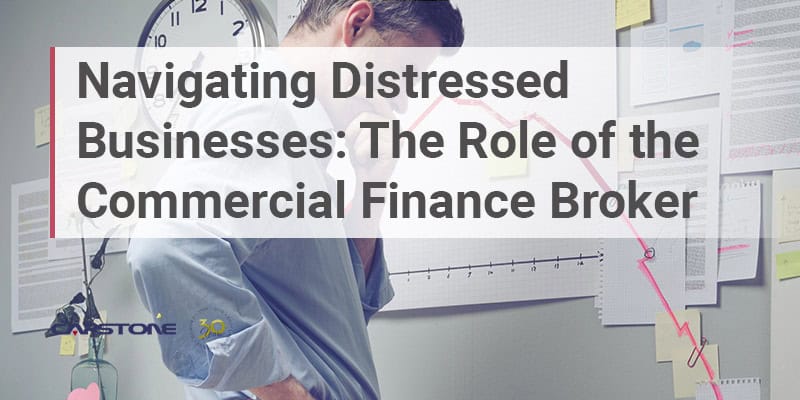Many small and medium-sized companies took advantage of federal loan programs to help them survive the economic disruptions caused by the COVID-19 pandemic. If your company obtained a Paycheck Protection Program (PPP) loan or an Economic Injury Disaster Loan (EIDL) directly from the Small Business Administration (SBA) or a participating lender, it is important to understand: when and how to apply for loan forgiveness, forgiveness terms, costs eligible for forgiveness, and the documentation required.
A unique feature of the PPP is that loans are eligible for forgiveness under certain conditions, but unlike the PPP, EIDLs are not eligible for loan forgiveness and must be repaid in full.
When to Apply for PPP Loan Forgiveness
Borrowers can apply for loan forgiveness up to the time that their PPP loan matures. For loans originated before June 5, 2020, borrowers have two years to apply for forgiveness or five years for loans issued after that date. Generally, it’s best to apply for forgiveness before the deferral period ends and payments begin, which is 10 months after the end of the covered period. However, borrowers must wait until they spend all of the loan proceeds that they want to be forgiven.
Loans funded before the PPP closed on May 31, 2021, are now beyond the coverage period, and borrowers can apply for loan forgiveness.
How to Apply for PPP Loan Forgiveness
If your loan was for $150,000 or less, which was the case for over 90% of borrowers, an application for forgiveness can be made in one of two ways – through your lender or the SBA.
- Through your lender. Your PPP lender will usually contact you with instructions on how to apply when your covered period ends. Some lenders provide filled-out forms with the necessary information, making your job easier.
- Through the SBA. If your lender is one of over 1,400 institutions participating in the SBA’s direct forgiveness program, you can apply using the SBA’s Direct Forgiveness Portal. A list of participating lenders is available here.
Regardless of which approach you use, it is not necessary to submit any receipts, payroll records, or additional documentation. If you have a second PPP loan, you must show the required revenue loss before the loan can be forgiven.
If your loan was for more than $150,000, borrowers apply for forgiveness with their lender. Check with your lender before applying to see if they have their own application process. You’ll need documentation showing how your PPP loan proceeds were spent.
PPP Loan Forgiveness Terms
Loan forgiveness terms are the same for your first PPP loan and second loan if you have one. Full loan forgiveness requires that you maintain staffing and compensation levels during the covered period. Loan proceeds must be spent on eligible expenses during the covered period, and at least 60% of the funds need to be spent on payroll costs.
The covered period for loans funded in 2020 is 24 weeks after disbursement, but borrowers may opt for an eight-week covered period if their loan was funded before June 5, 2020. Borrowers who received a first or second loan in 2021 can choose a covered period from eight to 24 weeks.
Expenses Eligible for PPP Loan Forgiveness
The original PPP only included forgiveness for eligible payroll and operating costs. The Coronavirus Response and Relief Supplemental Appropriations Act passed in December 2020 expanded eligible expenses to include: supplier costs, expenses for health and safety improvements and certain property damage.
These are expenses that generally qualify for PPP loan forgiveness:
- Payroll costs, including wages, tips, commissions, bonuses, and employer-paid benefits such as insurance, sick leave, and retirement contributions. Note that compensation for employees earning more than $100,000 per year isn’t eligible for forgiveness.
- Operating costs, including mortgage payments and interest, rent, utilities, and business software such as accounting, payroll, or inventory management.
- Supplier costs, including the cost of goods sold, essential to operating your business if the purchase order or contract was in place before the covered period. Purchase orders for perishable goods made during the covered period are also eligible.
- Property damage, including repairs for damage or loss due to looting related to public disturbances in 2020 that were not covered by insurance.
- Worker protection, including personal protection equipment and costs related to health and safety such as health screenings, installation of barriers or expansion of outdoor dining.
Documentation Required for PPP Loan Forgiveness
If your loan was for more than $150,000, the documentation you will need to provide for forgiveness includes:
- Payroll costs
- Third-party payroll reports for the covered period and payroll tax filings
- State quarterly business and individual wage reporting
- State unemployment insurance tax filings
- Bank account statements
- Payment receipts canceled checks, or account statements evidencing contribution to employer health and retirement accounts
- Other costs
- Lender amortization schedule or receipts showing business mortgage interest payments
- Business rent, lease, and utility statements reflecting payments made
- Invoices, receipts, or purchase orders showing covered operations expenditures, property damage costs, and supplier costs
- Canceled checks or receipts for other covered expenses such as protective equipment and health and safety enhancements
COVID EIDL
COVID EIDL loans are not eligible for forgiveness and must be repaid in full, but borrowers can take advantage of a 30-month payment deferral period that begins on the loan date. This deferral period applies to loans approved in 2020, 2021, and 2022 and is an extension of the original 12-month deferral period.
Targeted EIDL Advance or Supplemental Targeted Advance funds (up to $15,000) are considered grants and do not need to be repaid.
Business Funding Available
PPP and EIDL loans were great alternatives to closing your business during the pandemic when times were less certain than the present. However, with PPP and EIDL loan programs no longer a solution to your financing needs, business owners must consider alternative funding options. Alternative funding companies, such as Capstone, may be able to provide the working capital you need to sustain your business and help you negotiate the long road to a full economic recovery. Capstone can provide flexible and reliable transaction-based credit facilities, including:
- Factoring programs to quickly convert your accounts receivable to cash so you may buy inventory as well as pay employees and operating expenses
- Purchase order financing programs for the purchase of pre-sold inventory, finished goods, or materials, and other resources related to specific purchase orders or contracts
- Trade finance programs to support your international trade requirements
Capstone has the expertise to serve as your primary funding source or can work within an existing bank relationship for opportunities that banks and other lenders have declined or take too long to approve.
If your business has PPP and EIDL loans, managing your loan repayment along with implementing the proper business funding strategy will help ensure you have access to adequate working capital and will protect your financial resources.
For more information on PPP loan forgiveness, read our white paper: Payment Protection Program Loan Forgiveness Guide




